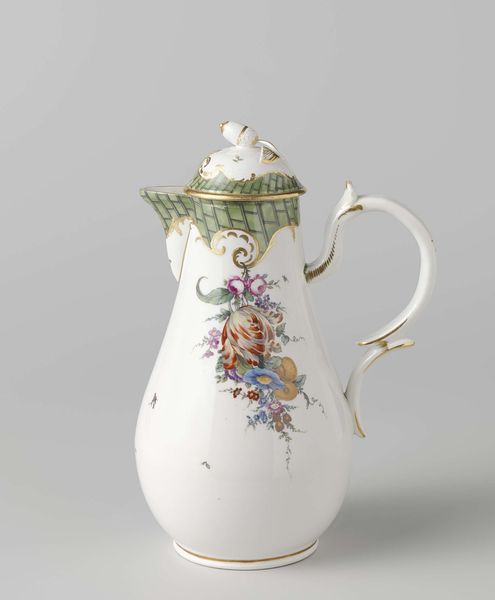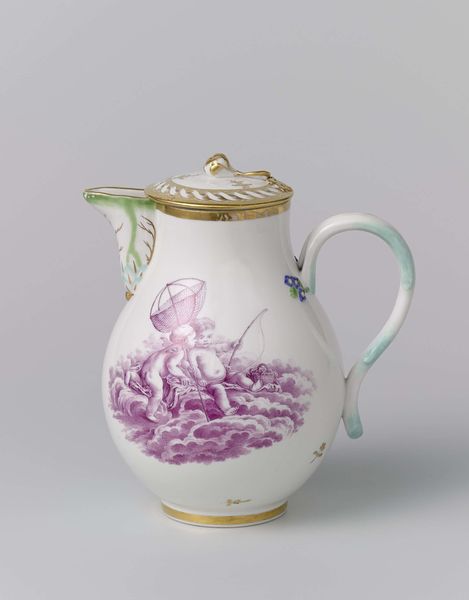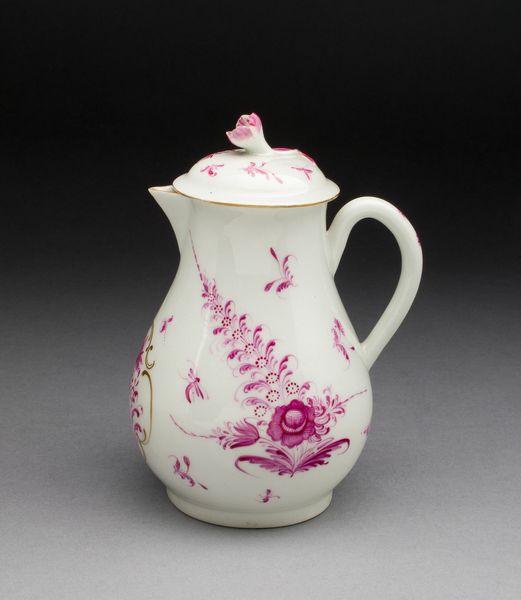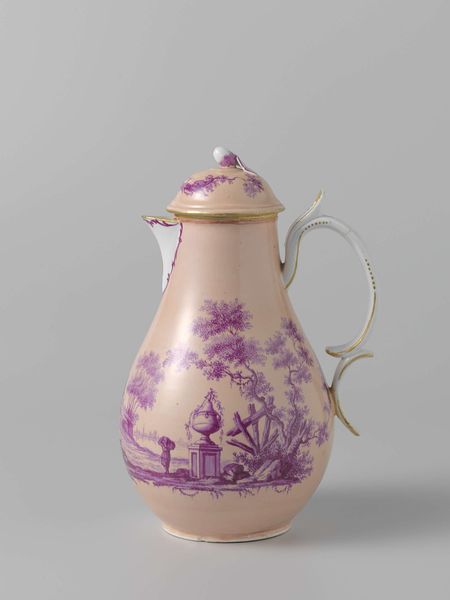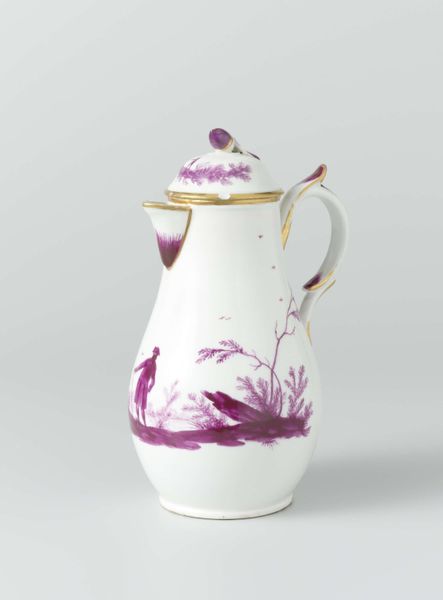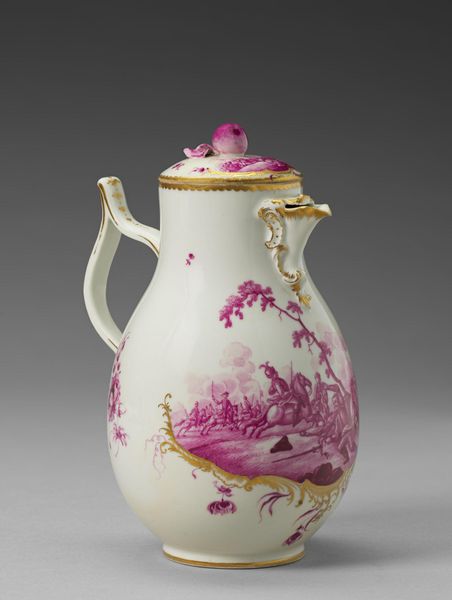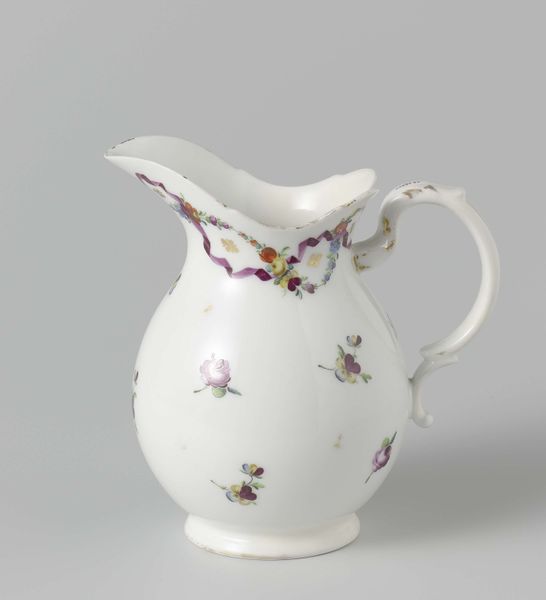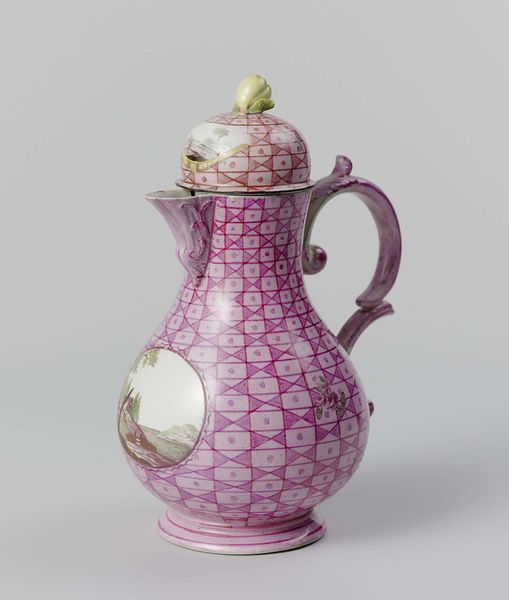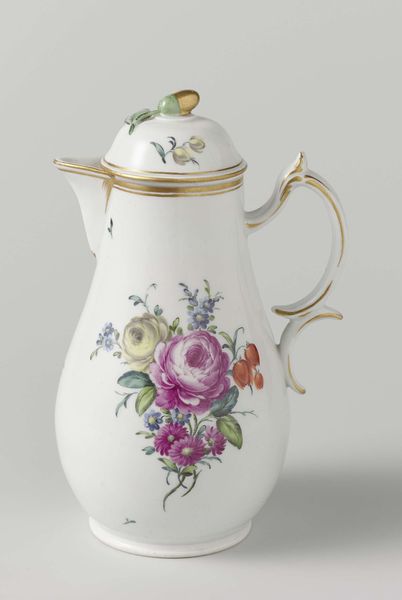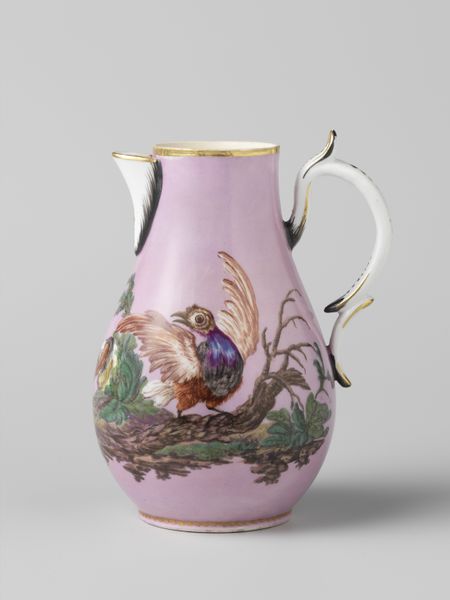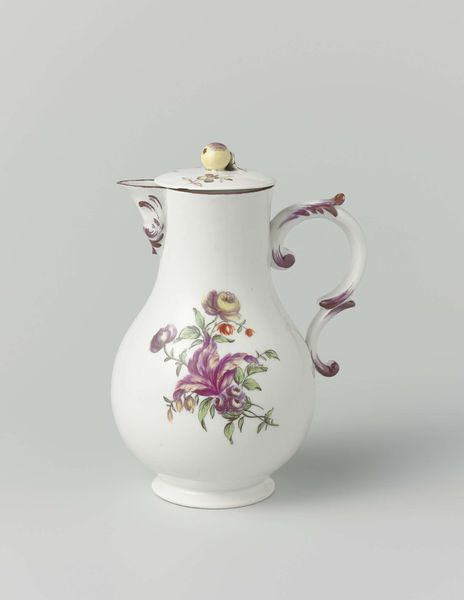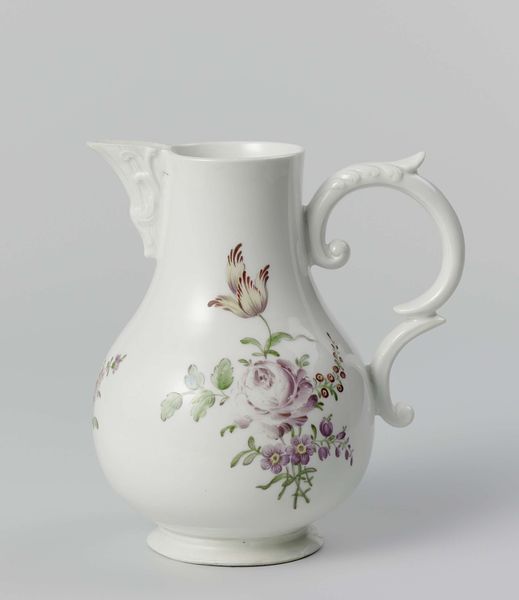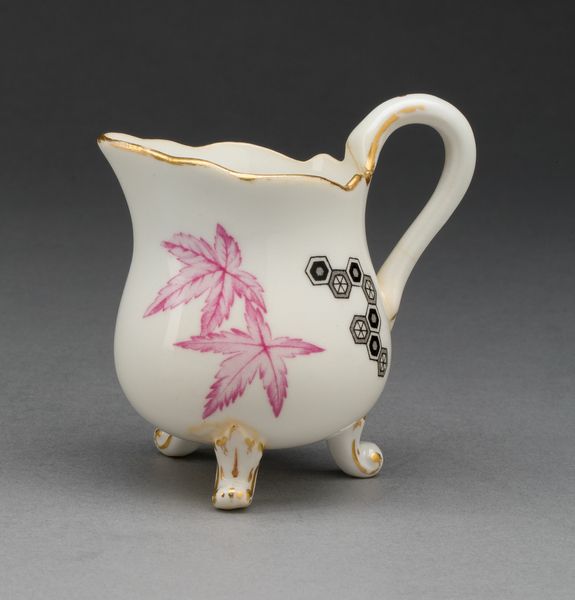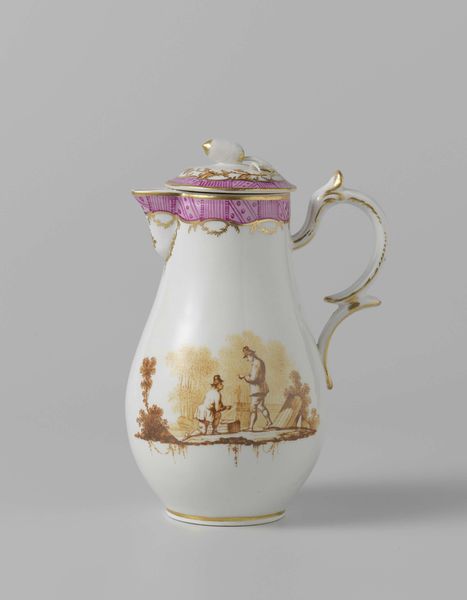
Dimensions: height 27.0 cm, width 17.8 cm, depth 15.0 cm, diameter 8.9 cm
Copyright: Rijks Museum: Open Domain
This coffee pot was made in Loosdrecht from porcelain, that most precious of materials. Its smooth, cool surface is covered in a delicate lilac glaze, against which a refined pastoral scene is painted. Think for a moment about what it takes to produce such an object. The clay had to be prepared just so, molded into the pot, and fired at high temperature. Porcelain production was a closely guarded secret in Europe, and this factory was one of the first to unlock the secrets to make it in the Netherlands. The decoration, too, took skill. The figures in the landscape were hand painted, which demanded a painterly touch but also a deep understanding of the ceramic medium. And consider how this piece would have been used, likely by a wealthy family to serve the increasingly popular beverage, coffee. The object encapsulates the 18th century’s global economy, technological innovation, and the rise of consumer culture. Appreciating the pot means understanding this network of materials, labor, and social practice, rather than just seeing it as a pretty object.
